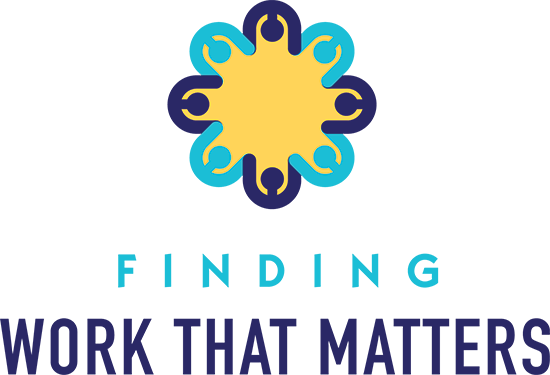Why Work That Matters
/As we are saying farewell to 2024, there is an air of new beginnings. Even if you are not into resolutions, the slowing down after the festive season is a great opportunity to switch gears.
I have a couple of ideas for you for winding up 2024 and getting excited about 2025.
The first is a year-end review that I have done for years. In reflecting back on the past year, it helps me get clear on how I want to focus for the next year. I think of it as pre-planning. There also is a connection to a great on-line resource. Check it out here.
Some ideas on what you could do if you think it is time to change in your work life.
First though, I wanted to talk about why I call the work that I do Finding Work That Matters.
It's about work that is in alignment with who you are. It's about doing work that engages you in just the right way. Doing Work That Matters is about work that matters to YOU.
Do you recognize yourself in my story? One of my first jobs was working in a factory; what I had to do all day long was taught to me in 5 minutes. After a week it was achingly dull. But I had bills to pay so I stayed. What I learned from that job was the high cost of a horrible work fit. My life energy was being sucked out of me. Gratefully, I escaped. But it raised questions for me.
Like... Is it possible to find work that pays the bills AND where I am excited to get up in the morning? Could I find a job where I felt fired on all cylinders?
Another way I ended up looking at it was... "how do I find work that fits?" Like a well-worn shoe, "how do I move towards something that is shaped to me?" Something that doesn't leave me at the end of the day feeling drained, and little energy for what is important to me. In short, work that matters.
Because of my own struggles with work, I was drawn to working with others who felt bewildered about where to take their work life next. I created workshops and worked one-on-one with people for over 30 years, and designed the Finding Work That Matters program.
Over the years, people have come to me frustrated with their work scene. They often say things like:
"What about the practicalities? Will the job pay enough?" Good question. The problem with the question is that if you ask it first, a bunch of doors close, possibilities that may very well lead to exactly what it is that you need. Practicalities have an important place in the discussion, but not at the beginning.
"But I have a great pension plan. I can't possibly quit my job." Benefits like pensions are called "golden handcuffs," because they are so attractive. My answer to that is you don't need to quit your job. The idea is to keep yourself in exploration mode until the answer is found. There are often more solutions to problems than you think. But the trick here is that you have to spend some time with the exploration to come to ideas of work might work.
"But I have thought of many ideas and I haven't found anything that will work. I can't do what I love." Finding work that fits for you is not an easy answer. If it was, you would have done it already. The challenge here is to slow down and break it down into steps. That is what I've done. For more about what I offer, you can find it here.
One of the first steps is to look at our strengths.
Unfortunately, we haven't been trained very well in knowing our strengths. Even if we think we know them, we often diminish them. Let me tell you what strengths are not; something we are good at. Strengths are more complex and dynamic than our skills or abilities. Strengths are personal; nobody can really tell you what yours are. The key is to identify them for yourself.
For more about strengths, have a look at this blog posting. You are also welcome to check out my offerings on my life work consulting page.
Here’s to an amazing 2025! May your work nourish and feed your soul!










